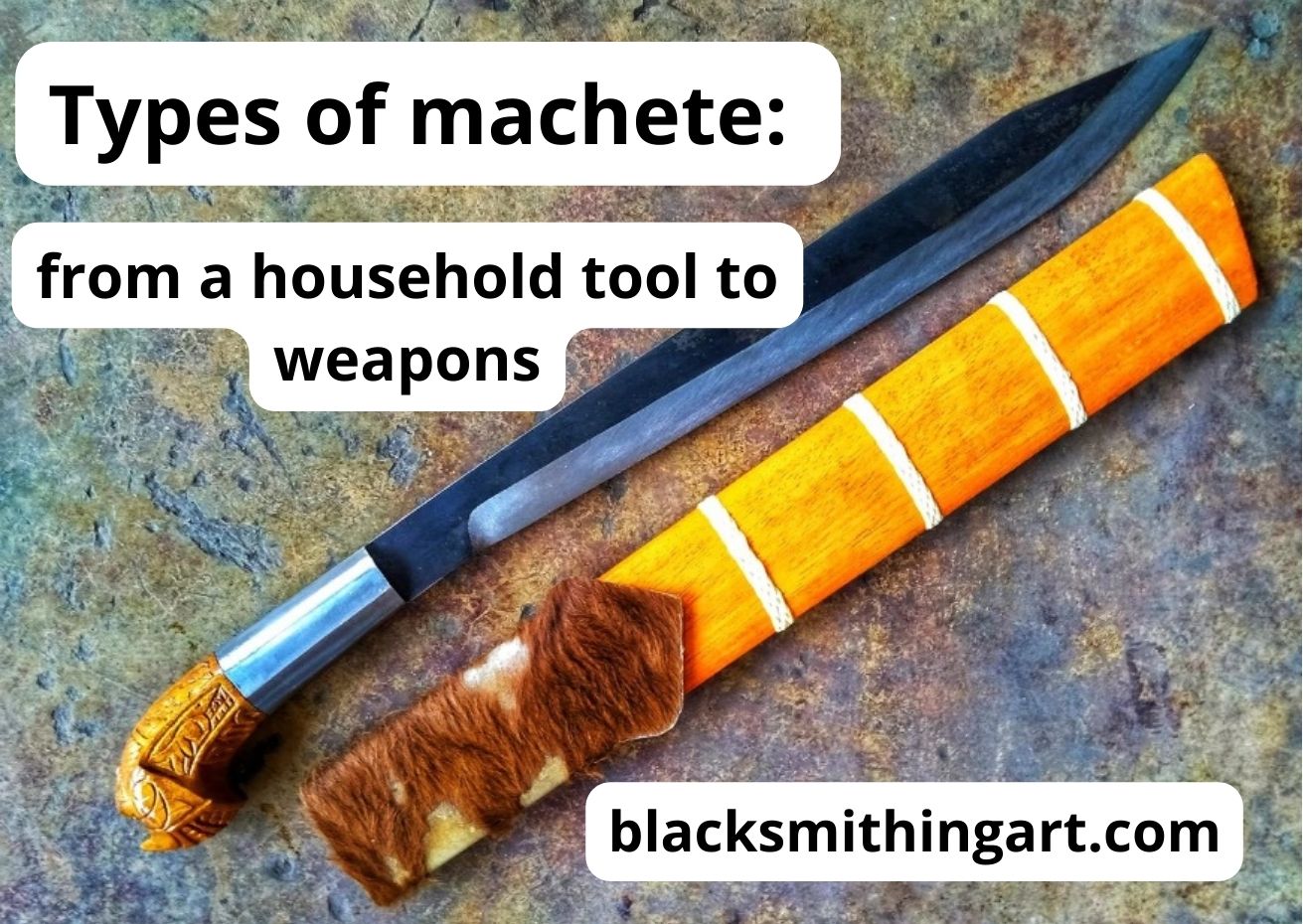Everyone has heard of cane cutters, wood carvers, jungle pioneers and survivors as well as peasant guerrillas fighting for freedom. All of them use machetes in their life and work: cutting, scraping, slashing, digging, whittling, carving, gutting, chopping, smashing, and more. So can one tool perform so many functions? It obviously can if it is a machete.
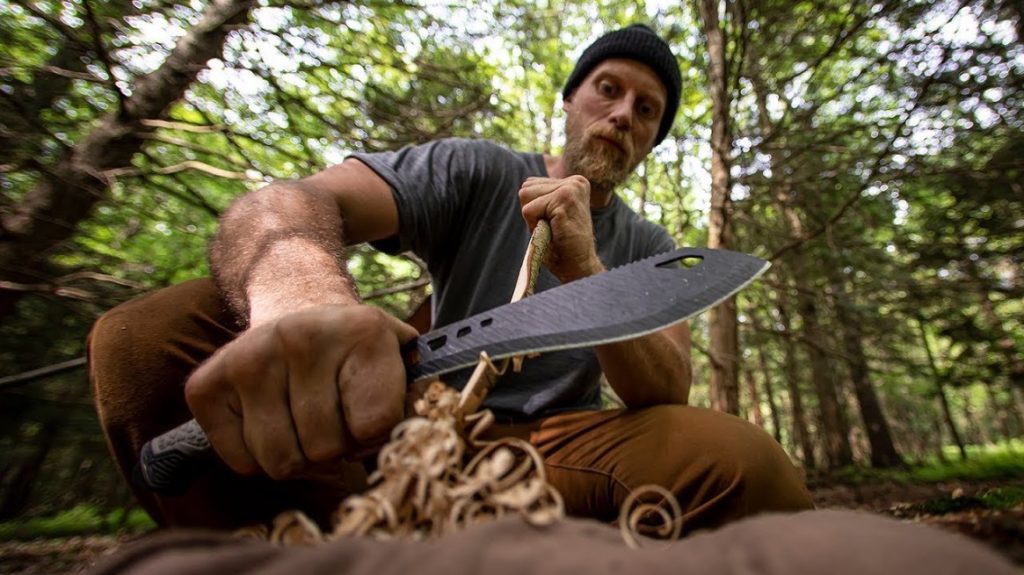
Let’s view closely at different machete types and their application fields.
Contents
- 1 Some background
- 2 Types of machetes
- 2.1 Bowie machete
- 2.2 Kukri machete
- 2.3 Interesting to know
- 2.4 Bolo machete
- 2.5 Latin machete
- 2.6 Parang machete
- 2.7 Billhook machete
- 2.8 A historical fact
- 2.9 Heavy machete
- 2.10 Cane machete
- 2.11 Colima machete
- 2.12 Panga machete
- 2.13 Tapanga machete
- 2.14 Barong machete
- 2.15 A historical fact
- 2.16 Cutlass machete
- 2.17 Some peculiar features of machete
- 3 A brief history of machete
- 4 How to care for a machete?
- 5 How to choose a machete?
- 6 Conclusion
- 7 FAQ
Some background
A machete is a broad-bladed blend of a knife, an ax, and a sword. It’s made of a blade, a tang, and a handle. It may be from 10 to 24 in long, with a straight or curved blade up to 0,11 in thick, always razor-sharp.
Did you know?
The longest machete in the world is Mukti Freedom Giant Machete. It is manufactured by Nepalese Ex Gurkha Khukuri House. Its total length amounts to 52 in with 36 in long high carbon steel blade and 16 in Rosewood handle. The machete weighs 12,1 lb.
In movies, a machete is often exposed as a terrifying bloody weapon. Illustrative examples are films by R. Rodriguez and E.Maniquis “Machete” and “Machete Kills”. Interesting that in real life machete is classified as an agricultural tool. There is not much legal regulation of machetes in the United States and many people keep them at home as utility and garden tools.
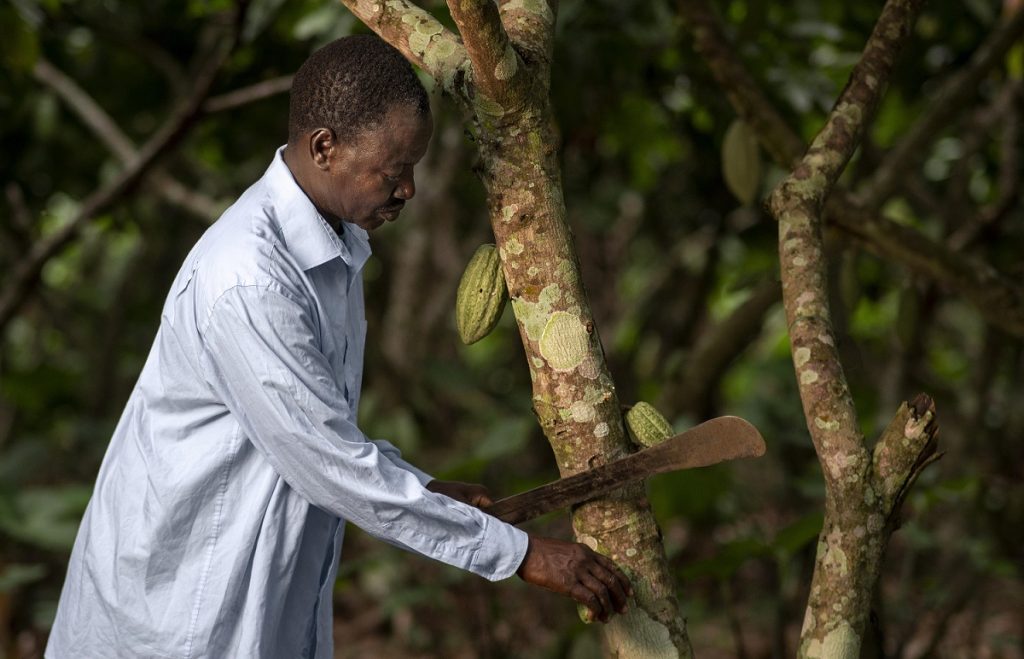
Types of machetes
Depending on their use, multiple types of machetes vary in shape, length, thickness, and material.
Bowie machete
It is also known as a survival machete or wilderness machete. The Bowie machete is a compromise between a machete and a Bowie knife, which in turn got its name after the American frontiersman Jim Bowie. A Bowie machete is therefore sometimes referred to as a large Bowie knife considered to have an American origin.
Bowie machetes with their clip point blade and a skinner tip reach a length of about 12 in. They are widely used by campers, woodsmen, hunters, preppers, and military people. The Bowie machete is relatively small and convenient to gird on. It’s equally good for cutting, skinning wild game, and protecting oneself.

Kukri machete
It also goes under the name Khukuri or Gurkha blade. Kukri machete comes from Nepal and other countries in Central Asia (Pakistan, India, and others). It was used by the population as a basic utility knife. It is similar to the Greek gladius and some elder knives from Japan.
Kukri machete is normally 16-18 in long and consists of three blade elements: a broad blade of distinctive curved shape, a narrow part close to the handle, and a sharpened tip.
Due to its form, the Kukri machete is suitable to perform various functions. Thus, it is extensively used in cooking, clearing brush, skinning animals, chopping firewood, and self-defense.
Interesting to know
Historically Khukuri had been used by Nepalese soldiers in all combats as the main weapon thanks to its inexpensiveness and availability. Modern Nepal Army keeps it as a much-esteemed and valuable tradition, though a part of the ammunition. The condition of the kukri proves the soldier’s craft and neatness.
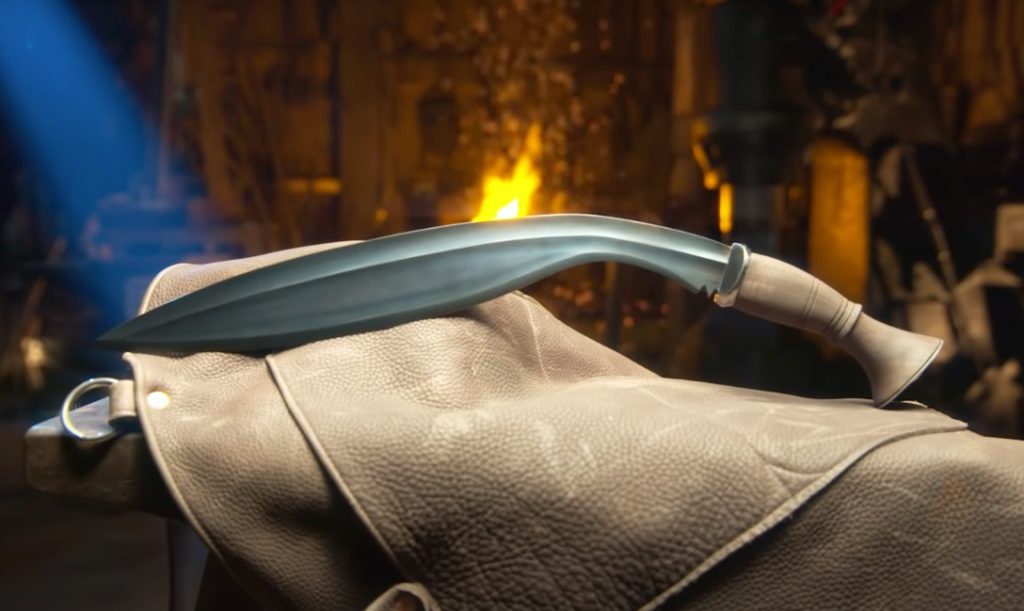
Bolo machete
Bolo machetes first appeared in the Philippines from where they spread to Southeastern Asia, Cuba, and the USA. Bolo machete includes garab, tabak, haras, sundang, and some other types of machetes that have slight differences.
A bolo machete is characterized by a long blade with a significant bulge that adds mass to the front of the tool. A bolo machete may have a blunt tip or sharp point and can serve different purposes.
The bolo machete is a perfect agricultural tool for harvesting crops like sugar cane, rice, soybeans, peanuts, and tobacco. It is also good to split coconuts or pineapples. Apart from farming, it is popular for clearing brush and chopping wood and food. During the 2nd World War Philipino soldiers fought with bolo machetes. Today bolo is used in martial arts like Arnis and Kali.
Latin machete
Its other names are traditional or bush machete. Latin machete comes from Latin America. It’s also called Collins machete in the name of a large swords, axes, picks, pocket knives, and machete manufacturer.
Bush machete usually has a straight normal back and a blade length from 18 to 24 in. The blade of a bush machete has no or slight curve and may enlarge a little toward its sharp point. The weight is evenly balanced, so the traditional machete makes a universal tool.
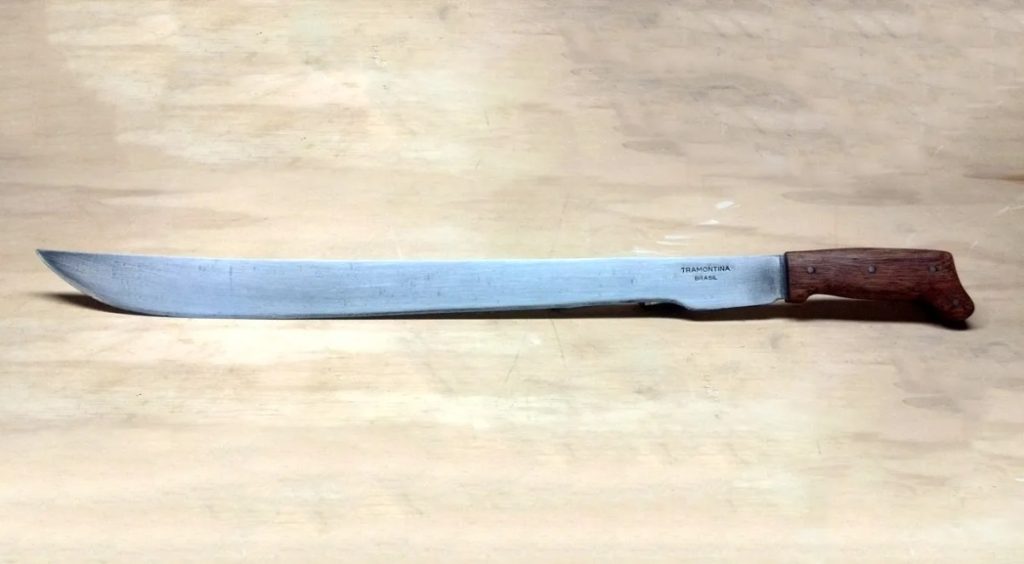
The most common use of a bush machete is outdoor work like clearing forested areas, chop wood, or sometimes combatting and defending oneself.
Parang machete
It is known as the Sable, Golok, or Bedog. Parang machete originates from Indonesia and looks similar to yataghan.
Parang machete may reach a length of 10 to 24 in, and sometimes 36 in. It is easily recognized by its curved blade. The curve goes all through the back and edge of the tool. The blade is quite thick and has three edges that can perform different tasks.
Parang machete is very good for wooden works. It’s widely used in jungle clearing and furniture production.
Billhook machete
It is alternatively called a Bagging hook, Reaping hook, Coa, and Sheaf hook. This is a European tool. It got its name due to a hooked tip associated with the bird’s bill.
Normally a billhook machete is 12 to 18 in long. Either the inside part or both the fore and the back of the hook on its curved blade is very sharp which makes the machete a helpful agricultural tool.
Billhook machete is very good for pruning, snadding, and stripping unwanted and dry sprigs and branches. It is convenient to cut reeds and wood.
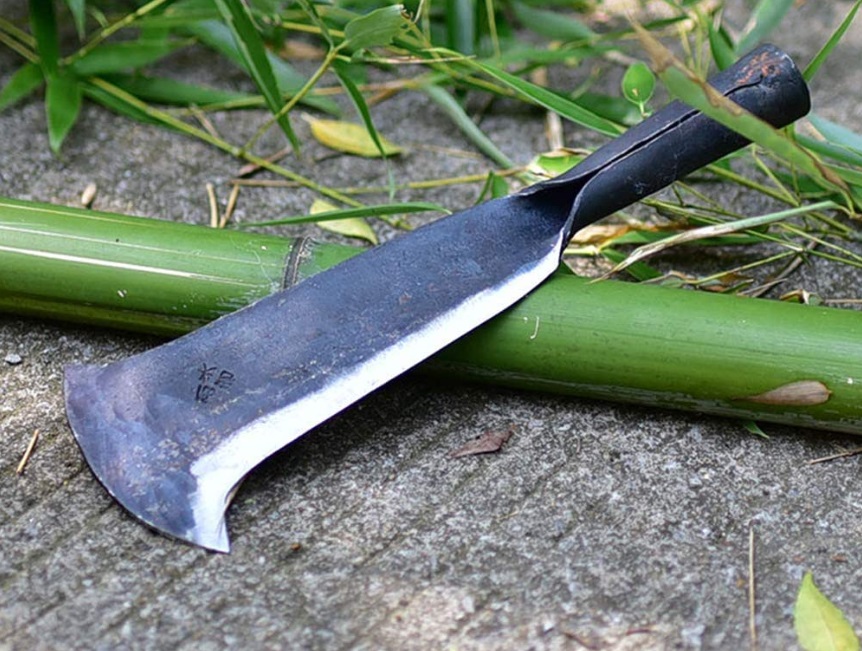
A historical fact
Back in Middle Ages, English soldiers used billhook as a melee weapon.
Heavy machete
As follows, a heavy or weighted machete is heavier than any other type of machete.
Heavy machete has a 22 to 24 in long blade. A straight spine and wide curved blade with no tip are natural for it. Mass is concentrated at the top which makes the machete extremely vigorous.
A heavy machete is wonderful for cutting and chopping almost anything. Due to its weight and power, it is especially good for clearing heavy growth.
Cane machete
It is called Machete de Suelo, Cleaver, Espading, and Corn knife.
A Cane machete is similar to a weighted machete and has a wide thin blade with a blunt end and a hook on it. Such a design allows one to quickly cut sugar cane-style vegetation and drag the chopped cane apart without bending.
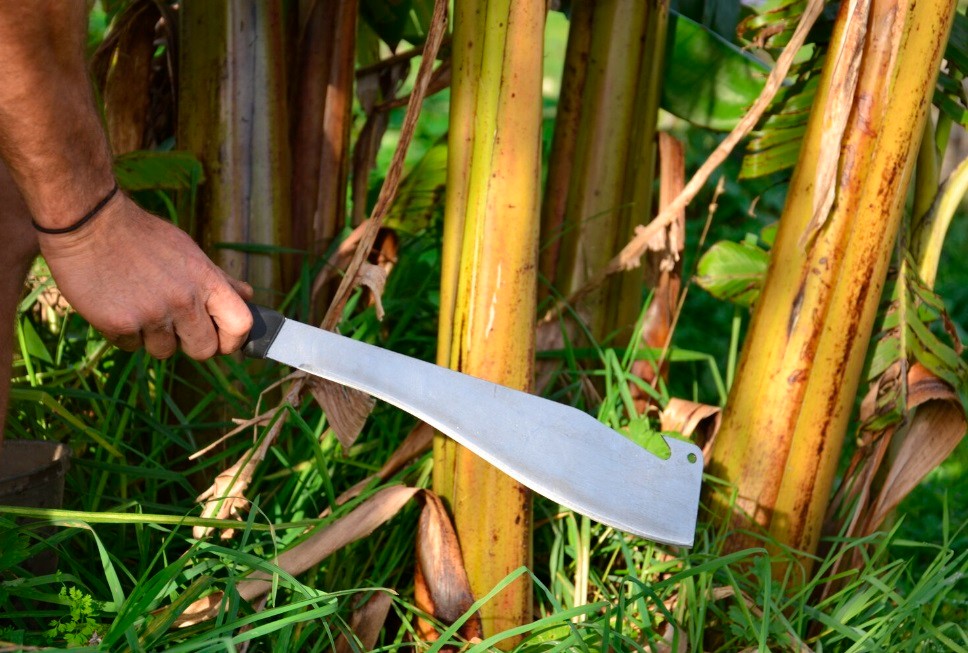
A cane machete with its hooked blade is a great tool for cutting sugar cane, rice, and bamboo, for hacking corn stalks, and as well for meat slashing and chopping.
Colima machete
A Colima machete is known as Acapulqueno, Costeno, Caguayano, and Panzon. Its native land is Central America.
Its main feature is that both the spine and the edge are sharp. Thus, one can work cutting plants with fore and back strokes. It is normally quite long.
A Colima machete is perfect for mowing large swaths of growth.
Panga machete
Its other names are Liniero, Daga, Burriquito Machete, and Rozador. Panga machetes come from Africa and the Caribbean.
A panga machete has a broad curved blade. A deep belly attaches to it additional weight and strength. A hallmark of a panga machete is a bent-up tip that provides piercing power. The length of the blade is between 16 – 24 in.
A panga machete is a powerful tool ideal to slice and chop bushes and tree trunks. It is also used to clear thick vegetation.
Tapanga machete
This machete as well comes from Africa and the Caribbean.
A tapanga machete has a broad straight-edged blade. Its length can measure 16 to 18 in. The thicker blade spine is straight all the way and upsweeps at the end to provide a bigger surface area and add mass to the fore blade. The blade sometimes has parallel grooves to improve balance. Blade spine can be sharpened and used for notching.
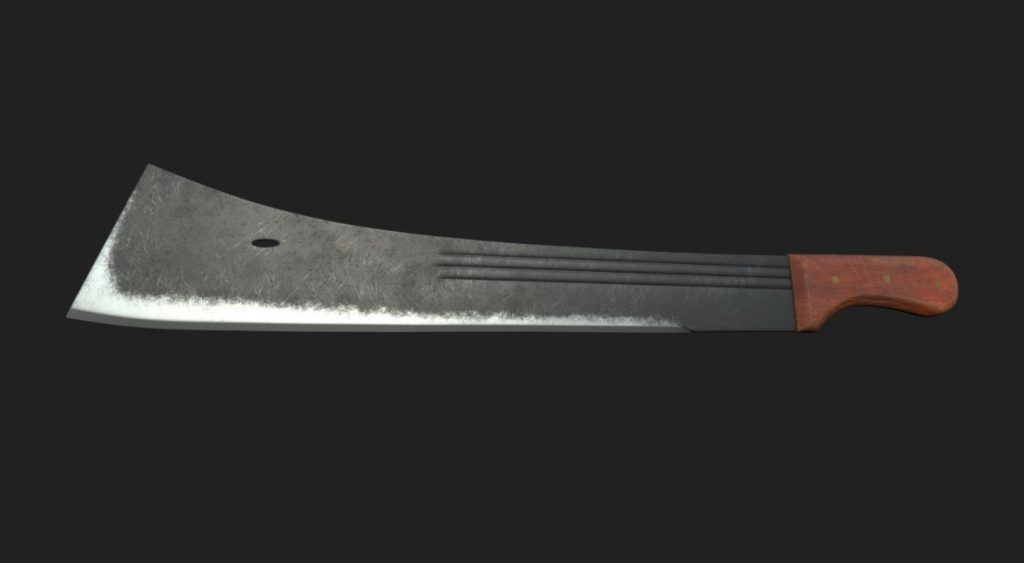
This type of machete is used to clear tough vegetation and chop and slice wood, and brush.
Barong machete
It is also referred to as Barung and Rawit. The home of this machete is the Philippines.
A historical fact
Initially, the barong machete dreaded European pioneers as it could chop off the barrels of their guns.
A barong machete is often compared to a leaf because of its shape. It has both a curved blade and a curved spine, though a blade curve is more distinct. The thick blade length varies from 16 to 24 in and bears a curved pommel.
A barong machete was widely used by the Philipino population as a cutting tool. It is good for clearing brush and climbers, but as well serves for defense and employs martial arts like Silat and Kali.
Cutlass machete
Cutlass machetes are known to be used by pirates.
They are approximately 27 in long, 1 in wide and have a cutlass-style blade curved at the edge.
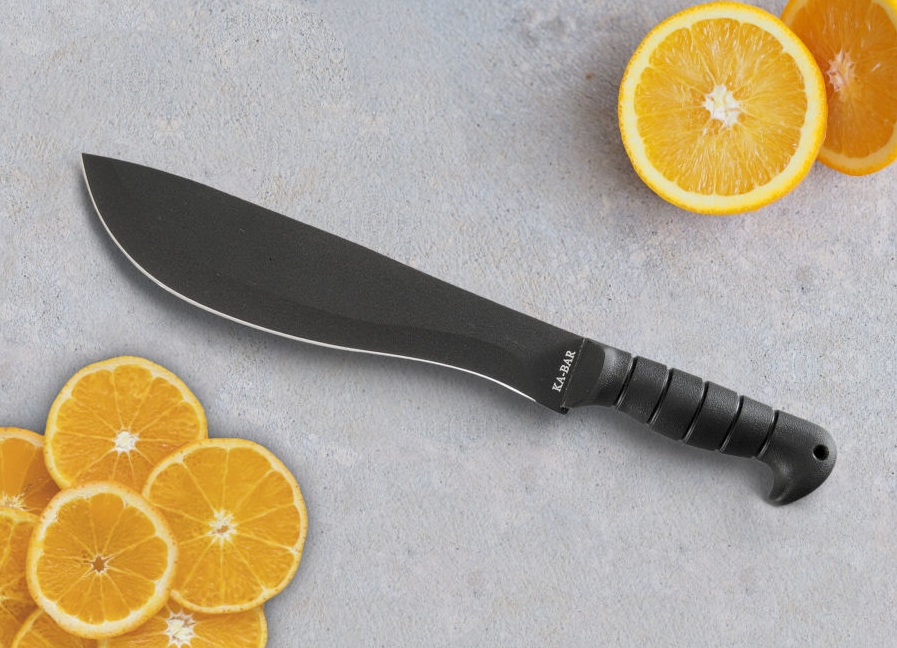
A cutlass machete may be a weapon and a clearing and cutting tool. It copes with brush, trees, and other task-works.
Some peculiar features of machete
There are some other characteristics and features in machetes, and a part of them is very specific. One vivid example is sawback. It can complete any machetes forming saw teeth on the blade spine. The teeth may be deep or shallow and are needed to saw or drag branches in densely vegetated areas. Some users find it beneficial, while others don’t.
Similar functions are performed by a hook which is present on some machetes. It has a very sharp inside part. Such a supplement was invented by the company Woodman’s Pal, but now can be found in other brands’ products.
Another distinguishing feature of machetes is a two-handed hilt. It is met in various types and makes a long handle allowing one to hold the tool with both hands. This allows a very tight hold, but the convenience is debatable.
To cut the weight of a machete blade there can be a fuller along the spine. Sometimes a few fullers go together parallel to each other. They are also called grooves. Fullers or grooves are quite popular in a kukri.
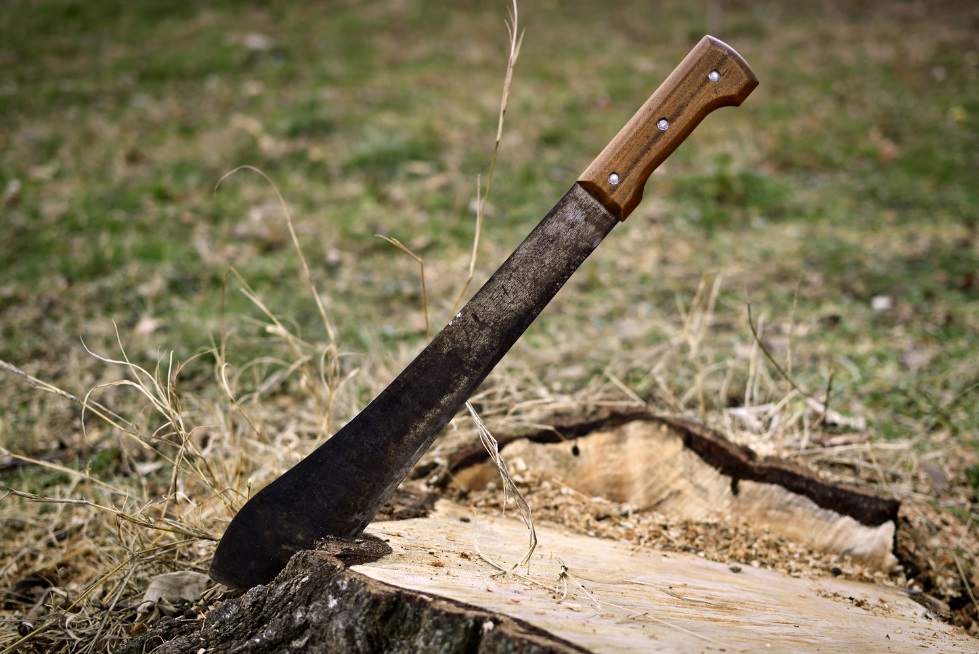
Some machetes have a horn at the back of their handle or right between the handle and the blade. This one is called a quillon. It can be front and rear according to its positioning. Quillons protect the owner’s hand from sliding off the handle or slipping down the sharp blade correspondently.
Another kind of hand protection is a knuckle guard. It can keep the owner’s fingers safe from branches and opponents. Besides a knuckle guard provides a tighter hold of a machete.
Some machetes have a hole in their handle called a lanyard hole. It is needed for a loop or strap for better security. Such a strap is fastened around the wrist so that a machete does not fall out.
A brief history of machete
The word “machete” is supposed to rise from the Spanish word “macho” – sledgehammer or otherwise brave, manly. Some believe that it comes from the Roman “machaera” as they called the falcata sword.
Whatever the origins are, machete history goes back to the Stone Age when people tried to make their first tools for protection and utility needs. Made of stone and bone machete ancestors were quite primitive. But upon the development of agriculture, handicraft, and trade they improved and spread.
Multiple times machetes served as weapons for protection, in fights for freedom, uprisings, and riots. Independence wars in Cuba, the Mau Mau rebellion, Rwanda genocide are just a few examples where machetes presented deadly weapons.
Machetes were made manually up to the 18th century. The discovery of smelting, then rolling mills allowed a huge step forward in tool manufacturing. Finally, in 1826 the American Collins company was created. This was the first and the most reputed producer and exporter of machetes for about a century.
Today machetes are made all around the world. Among popular machete, brands are Cold Steel, Gerber, Condor, Ka-Bar, Tramontina, and ESEE.

Machete on the emblems and flags
Machete and the like tools can be found on some flags and emblems.
Machete is presented on the Angolan national flag together with a gear emblem and a star. Machete symbolizes peasantry, agricultural industry and combat struggle.
Machete on the National emblem of Angola together with a hoe features revolution that supported the nation’s sovereignty and significance of farm workers.
The national emblem of Djibouti has on it laurel branches, a spear with a shield, and two hands each carrying a large machete. The hands stand for two major ethnic groups of the country.
Two crossed curved swords and a palm tree are plotted on the National emblem of Saudi Arabia. The swards represent the Kingdom of Hejaz and the Sultanate of Nejd and their sovereignties, or strength, stamina, and sacrifice.
Three seaxes (otherwise cutlasses) on the flag of the English county Essex do not have a clear explanation. But they are believed to reflect the name “Saxons” derived from the seax for which they were famous.
How to care for a machete?
There are a few simple still essential rules to follow for the perfect appearance and working order of any machete.
Machetes need a dry place to stay in. Neither metal nor wood (if the handle is wooden) does not like humidity.
Machetes love sharpness. Letting them lie dull won’t do good. A basic sharpening stone is great to maintain a machete in a good condition.
No rust should be allowed on a machete. If it is getting rusty cleaning is to be done immediately. This especially regards carbon steel blades.
Machetes need regular oiling. Vegetable oil can be used for food processing machetes, otherwise, any oil is applicable.
How to choose a machete?
If choosing a machete first of all consider the purpose of use.
Then pay attention to weight, size, blade length, curve, how it sits in hand, and how you feel when handling the tool.
Blade material matters. High-performance material not subject to breakage, cracks, and chips will make a tool very practical. High-carbon stainless steel blades suggest a good option. Some specialists recommend 1095, AUS-8 carbon steel, and 420 stainless steel as the most practical.
The width of the blade should be no less than 1/8 “. If too thin machete will not fit for heavy obstacles and hard stuff. Rockwell hardness is advised to range between HRC 55-60. But again much depends on the purpose of the tool.
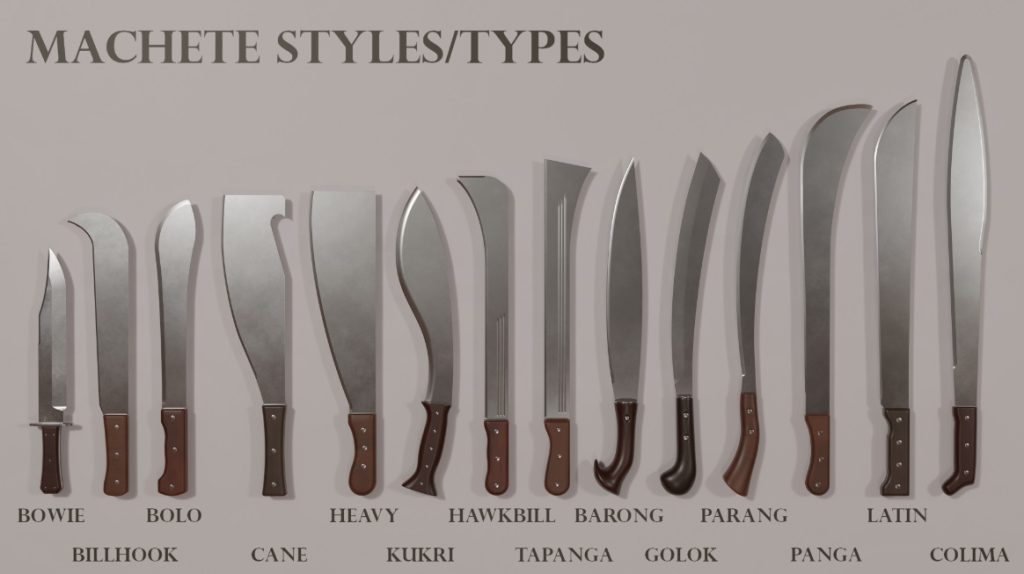
When needed an extra strong machete a full tang may play a part. A single-piece metal thing promises more reliability and lifespan.
Machete handles are made of plastic, bone, wood, composite, or metal. A wooden hilt looks smarter. Rubber or rubberized one is non-slip. But each material has some downsides. Comfortable grip is a relevant aspect.
The price range for machetes is vast. Inexpensive tools cost from $10 only. There is a huge choice of machetes in the average tier from $35 to $50. The Latin, bol, and parang are the most expensive machetes costing up to $100.
If you’re interestd not only in types of machete, but also want to know more about chinese sword types, just click on the link.
Conclusion
One can see from above that machetes have been quite popular all over the planet for centuries.Depending on the region and primary needs of the population machete developed different peculiarities like form, size, curve, weight, etc., and thus various types of machetes appeared.
Machetes are in demand among campers, hunters, and preppers. Hiking and fishing, farming, gardening and woodworking, butchering and cooking, even shaving for some thrill-seekers – all of these take advantage of using a machete.
For those living in extreme conditions, a machete often serves as a pocket knife or rather a survival knife. Machetes as well found their way to self-defense and martial arts.
Easy to gain and take care of, machetes have been used in everyday life for all thinkable purposes. Now that they are invented and described it is a short work to choose the one that will suit you the most.
If you want to know more about types of machete sword, please, open the link.
FAQ
Are there different types of machetes?
There is plenty of machete types on the market today. They come from different locations and are made to solve various tasks. The most widespread types are the Latin machete, kukri, Bowie machete, panga, bolo, and parang. Each type has its specific features and is represented by many manufacturers.
What is the best type of machete?
Each machete type is intended for a specific task. Based on the purpose of using a machete the best type can be determined.
– For clearing heavy brush take parang or golok.
– For survival best are kukri and parang.
– For camping get a kukri.
– For chopping, wood bolo or panga will be a good choice. For self-defense best machetes are panga, bolo, Latin, and kukri.
– For skinning animals Bowie is great.
– For cutting meat Bowie is as good.
– For wood, shaping uses Latin or kukri.
– For opening coconuts, kukri and parang will go well.
– For cutting a cane choose a cane machete.
– The most universal tool is kukri.
What machete does the US military use?
Machete LC-18 has been used by the US military since 1943. Produced in the United States by Ontario Knife Company from carbon steel it has an 18 in blade and a plastic hilt. The manufacturer insists that LC-18 can be useful not only in combat but as well in the forest, jungles, and even in the backyard.
What is a small machete called?
The golok machete from Southeastern Asia is a compact tool, with a shorter but thicker blade. Due to its size, it’s portable and good for wood chopping. It is also used for slicing and clearing and even as a weapon upon necessity. Generally, a golok is an ordinary versatile tool for Indonesians and some other people.
Its length can be as small as 12 and up to 18 in.
Handles are often made of bone or wood.

